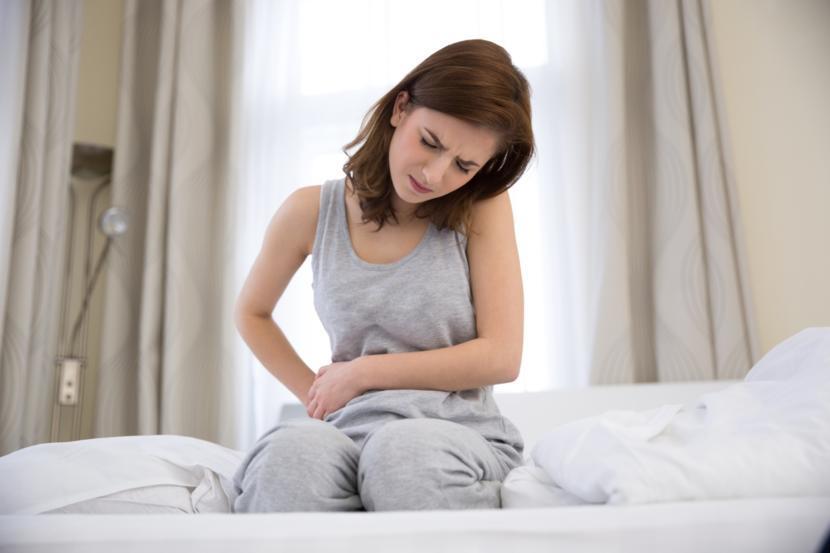How to Diagnose and Treat Gallstones

Who are at risk of developing gallstones?
- Obesity is one of the biggest risk factors in developing gallstones. It increases a person's overall cholesterol levels, making it difficult to maintain a completely empty bladder.
- Women who are pregnant, on birth control pills, or taking hormonal replacement therapy increase their cholesterol levels, making them at risk of developing gallstones.
- People who are suffering from diabetes or taking medicine to lower cholesterol are also at risk.
- People who are trying to lose weight or are into fasting diets.
Signs and symptoms of gallstones
It is difficult to notice the signs and symptoms of gallstones. It not uncommon for people not to know that they already have gallstones up until their doctors say so. Below are some common symptoms but it is best to consult your doctor if you think you may be suffering from gallstones.
- Vomiting
- Nausea
- Over digestion
- Pain in upper belly that lasts for several hours.
Gallstones are common in people that suffer from cirrhosis or blood diseases like sickle cell anemia.
How does a doctor diagnose gallstones?
In order to diagnose whether you have gallstones or not, the doctor will first check your skin for jaundice, as well as tenderness in your abdomen in case there are gallstone-related symptoms present. An obstruction can also be detected through a blood test.
Symptoms of digestive problems - like an infection of the bile duct - can resemble gallstones symptoms, so it is necessary for the doctor to conduct a test to determine if you have gallstones. There could be other diseases that produce similar symptoms. Thus, it is necessary to take the required tests as advised by your doctor to accurately single out if you're indeed suffering from gallstones.
An ultrasound exam is a common test to diagnose gallstones. It is a painless and quick procedure that uses high-frequency sound waves to produce pictures of the bile duct and the gallbladder.
ERCP is conducted if the doctor suspects that there could be a gallstone inside the bile duct. This test enables the doctor to view the bile duct via a tiny flexible tube known as an endoscope. An aesthetic drug is sprayed at the back of the patient’s throat to prevent gagging. The patient is then sedated and the endoscope is inserted in the mouth and passes through the stomach and into the part of the small intestines where the bile duct is located. Dye is then injected through the tube and into the bile duct, after which X-rays will be taken. Gallstones can also be removed through this same process, and the whole procedure takes about an hour.
Monitoring gallstones
1. Treatment of gallstones is necessary only if there are symptoms
Although a gallstone attack can be very painful and frightening, a third to half of those affected never report a recurrence. Sometimes the gallstone dissolves and dislodges all on its own, thus remaining in quiet mode. After the first attack, doctors adopt a wait-and-see method, sometimes called "active monitoring", to see if the problem has resolved itself. This is the conventional method of treating gallstones.
When a patient has recurring attacks, treatment or surgery can still be postponed if the patient has health complications. In case of delayed surgery, the patient should remain under a doctor's watch and any recurring attacks should be reported immediately.
2. Treatment for gallstones that do not require surgery
If you prefer not to undergo treatment for your gallstones, your doctor may suggest any one of these non-invasive techniques. However, these techniques may kill the symptom-causing gallstones, but they do not prevent other gallstones from forming, so there's still a chance of recurrence.
A bile salt can be used to dissolve some gallstones, but this technique can only be applied if the gallstones are a result of cholesterol and not from bile pigment. Ursodiol (Actigall) is a drug tablet given to the patient according to the size of the gallstones. It could take several months or even a year to clear the condition. Some patients even take this drug indefinitely.
Shock wave therapy is another technique that does not require surgery. What it does is breakdown the stones into fragments through the use of high-frequency sound waves. The small pieces are later dissolved using bile salt.
Contact dissolution can also be applied to dissolve gallstones. A catheter is inserted via the abdomen, and then a special drug will be injected straight into the gallbladder. Mostly it takes only a few hours for the stones to disappear. Both shock wave therapy and contact dissolution techniques are still in an experimental phase.
The above therapies may sometimes prove effective, but usually in the long term, they are not successful. They are often not recommended because recurrence is very common.
Surgical Procedures
In the past, open surgery was the norm - a procedure that inflicts a large incision in the patient’s abdomen. Its recovery time takes about 2-3 weeks.
Today, laparoscopic cholecycstectomy is a far less invasive option. This procedure is simpler with only a few small incision made in the abdomen, and the gallbladder is removed with a pencil-thin instrument. The surgeon can view the operation through a camera that’s inserted through the incision. This provides a clear picture of where the surgeon needs to operate. Laparoscopic surgery is safe, less painful, consumes less time to recover, and very effective. But, obese people and those who have severe infection still have to undergo an open surgery.
Removing gallstones without surgery
Chenodio (chenix) or ursodiol (actigall) or both are prescribed if the patient cannot undergo surgery. These medications dissolve the cholesterol stone. Side effects include mild diarrhea. In addition, the stone might come back after the patient stops taking the drugs. It’s a prolonged course of treatment and may take years before the patient is fully healed.
This type of treatment depends on the symptoms of gallstones and how it affects the patient's daily routine. If there are no symptoms, then active monitoring is often recommended. Treatment is only needed if there is an increased risk of developing the following conditions:
- Cirrhosis
- Portal hypertension
- Diabetes
Does the removal of a gallbladder cause any adverse effects?
A gallbladder is not essential in digesting food. When the gallbladder is removed, bile can still come from the liver into the gut. There is, however, no more space available for bile storage between meals. There is constant flow and surges of bile that come from the gallbladder during mealtimes.
Bloating or mild abdominal pain is sometimes reported in people who have had their gallbladder removed. This is especially true after taking a high-fat meal. Some patients also notice an increased frequency in stool passing, often considered mild diarrhea. Appropriate medication can be administered to manage these discomforts.













